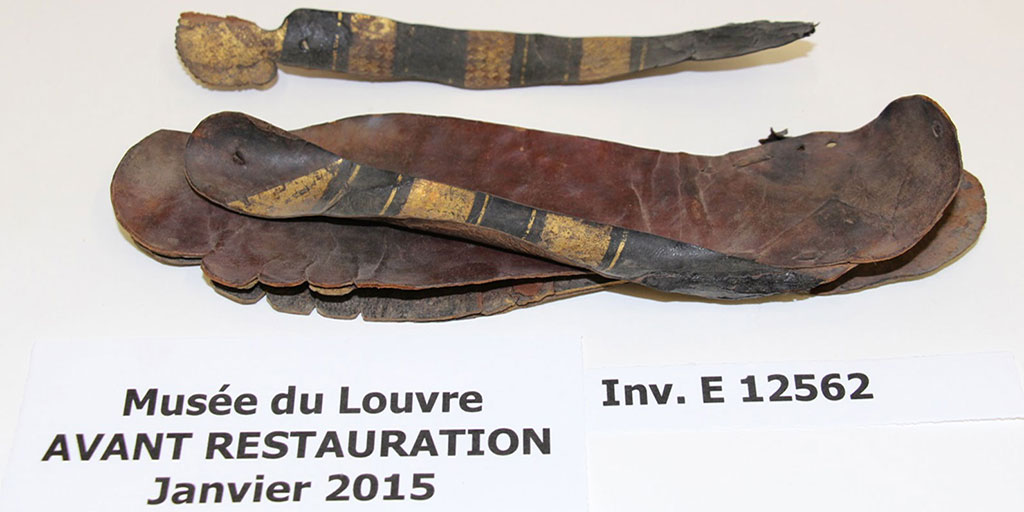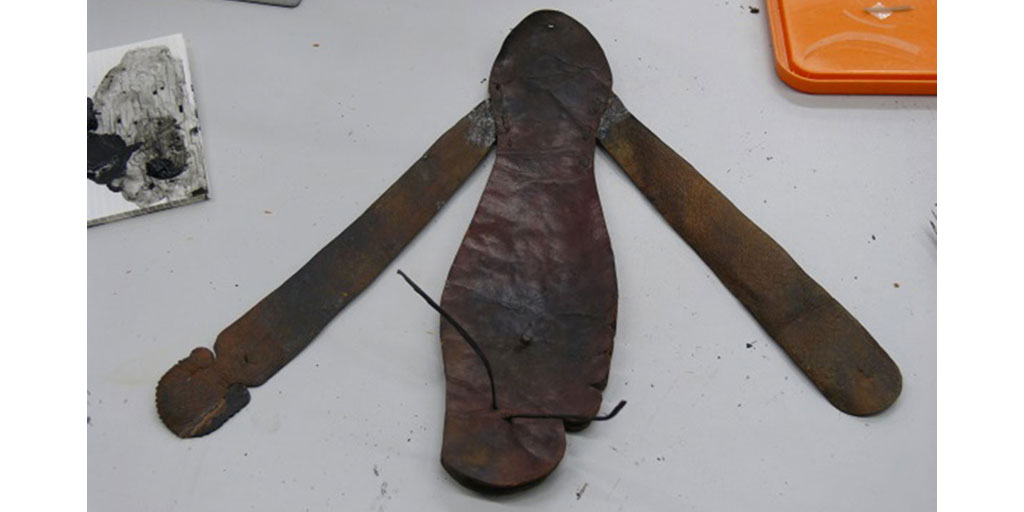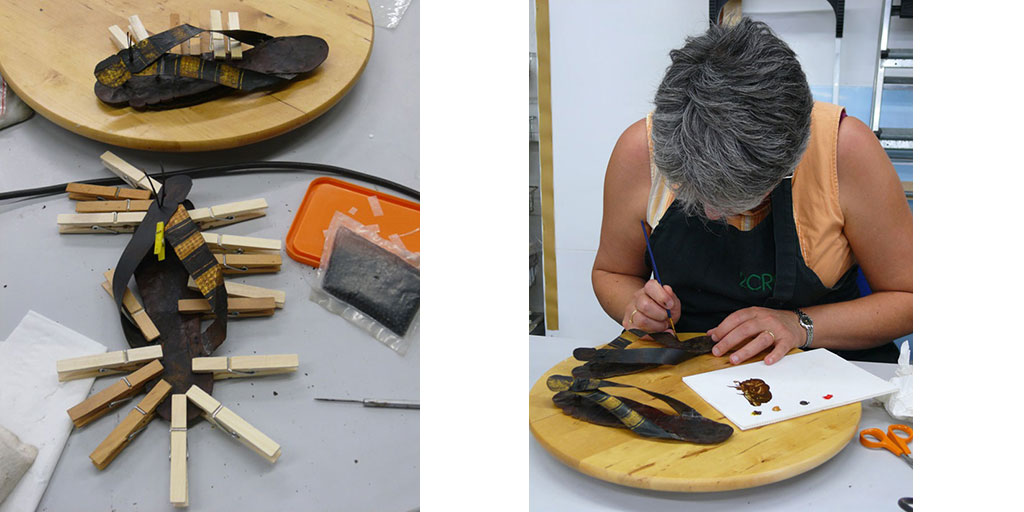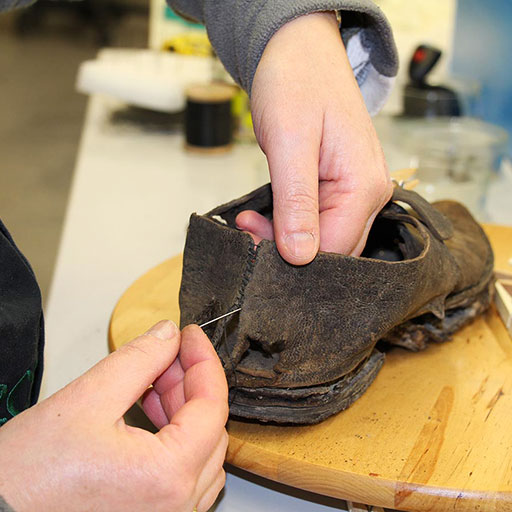
Means
2CRC dhas a special area dedicated to treatment with large washing sinks, freezers, refrigerators and a freeze-dryer(0,25 m3). Drying method allows restoring the flexibility of the leather finds with a natural color.
Archaeological leather
Archeaological leather needs special devices to be treated and dried as most of the time, it is discovered humid or waterlogged. PEG 400 impregnation and freeze-drying is used.
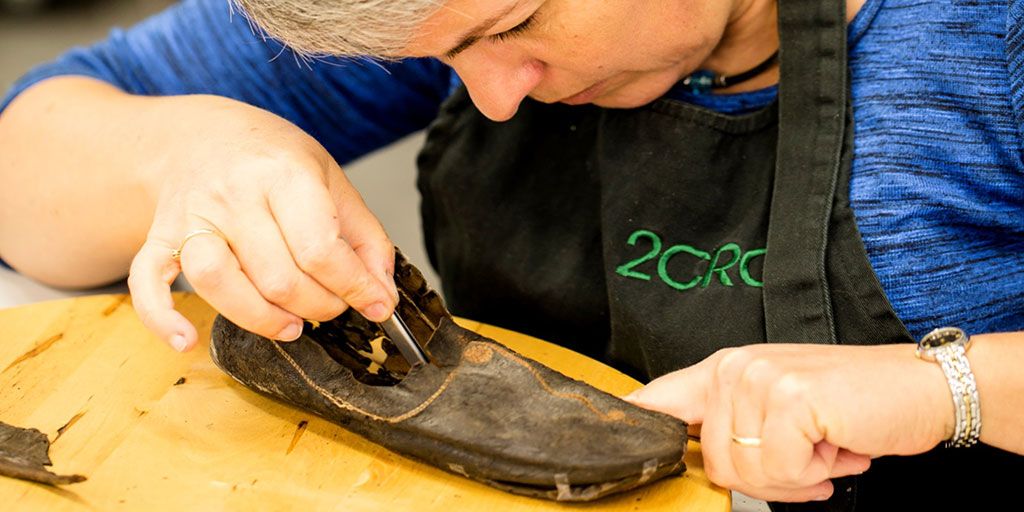
Restoration
After drying treatment, the leather fragments can be reassembled and reshaped to reconstitute 3D objects. Good knowledge of the objects typology is required in order to keep all the technical information and to do the best restoration / reshaping.
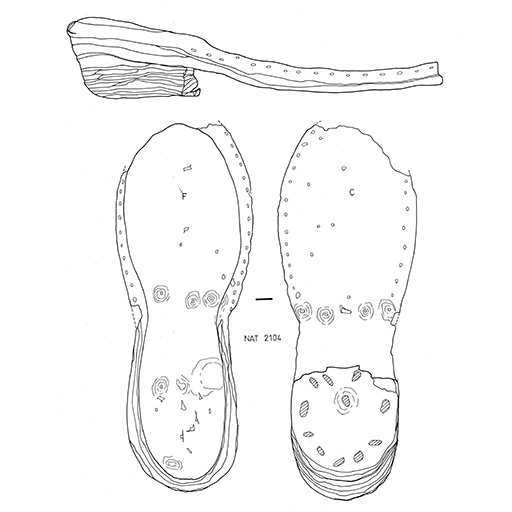
Study of collections
2CRC is also proposing the collection study (archaeological drawings, statistics and typology classification).
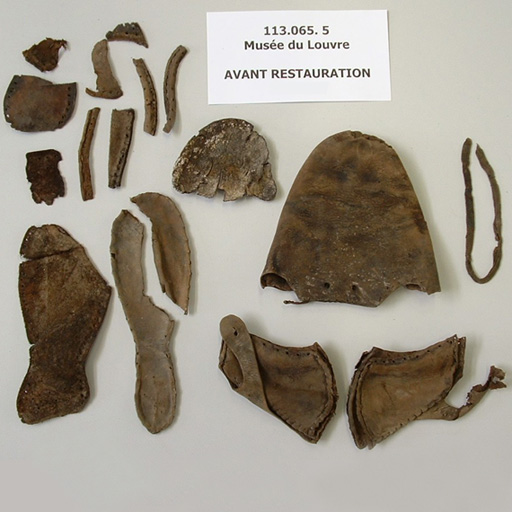
Typologies
Good knowledge of the objects typology is required in order to keep all the technical information and to do the best restoration / reshaping.
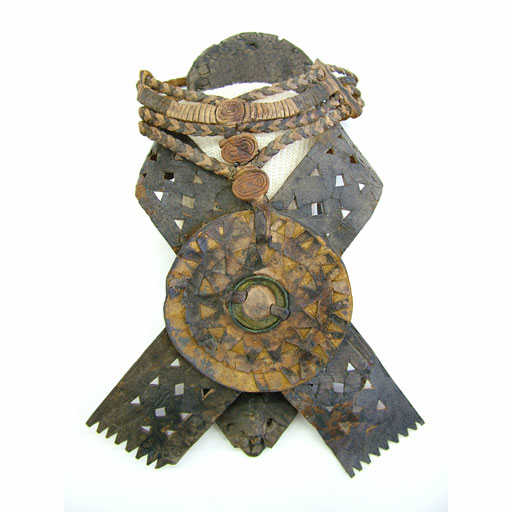
Archaeological shoes belonging to Louise de Quengo (1656), Jacobins monastery in Rennes (North west of France)
A pair of shoes has been discovered by INRAP archaeologists in the city centre of Rennes. It was found in place on the feet of a dead woman. Her name was Louise de Quengo and she was buried in a lead sarcophagus since 1656. This grave was studied and conserved by an exceptional team of historians, archaeologists and conservators, with the aim of learning more about the funerary practices during this period of time. We were in charge of the shoes conservation treatment and restoration. Work on the clothes has been undertaken by another conservation unit (Materia Viva) in Toulouse.
Link : www.inrap.fr
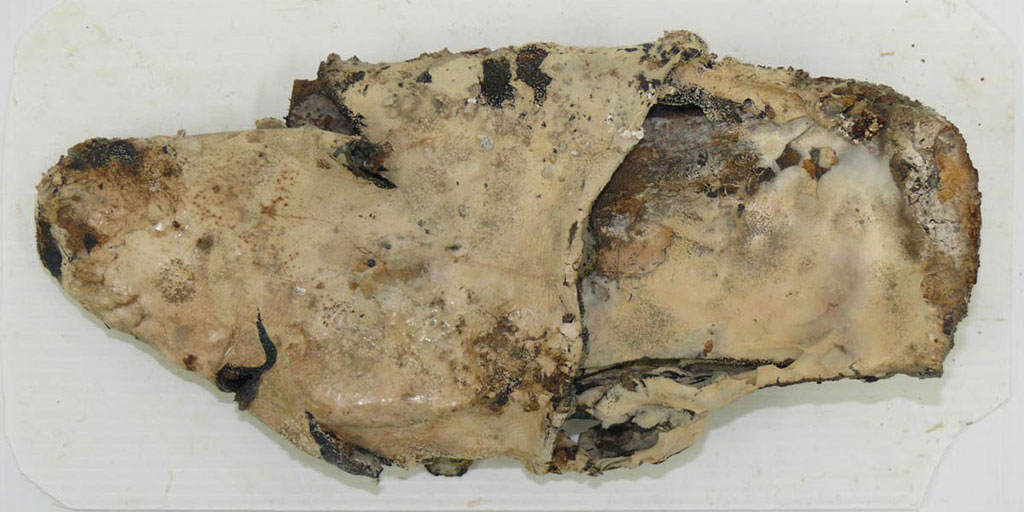
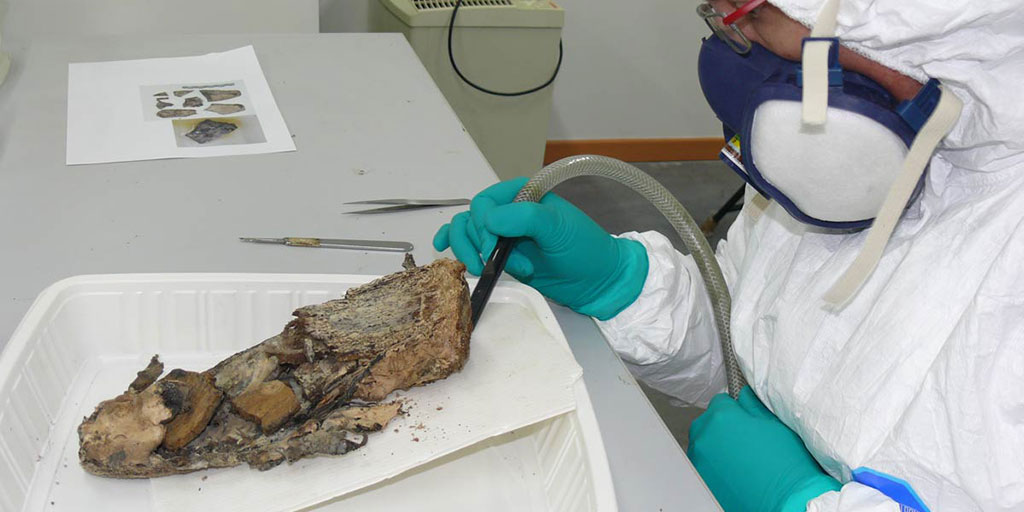
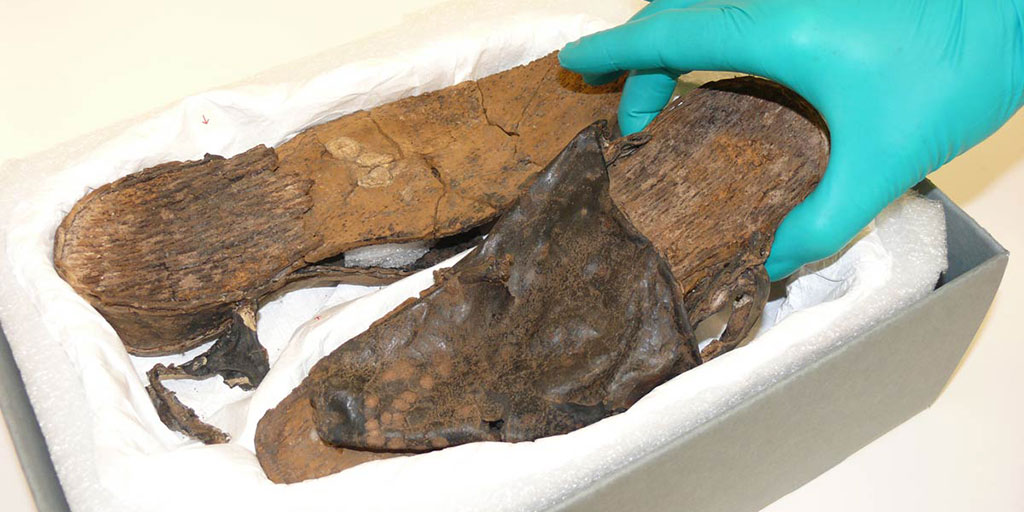
Waterlogged Archaeological Leather Shoe Discovered on the Wreck of the Jeanne-Elisabeth (1755)
The leather shoe was discovered in 2011 on the wreck of the Jeanne-Elisabeth (sunk in 1755 near the coast of Languedoc-Roussillon). The impregnation process and freeze-drying has stabilized leather and authorized manipulations for study. Following this work, the reassembly and the reshaping of the shoe were conducted within the aim of an exhibition (http://musee-histoire-marseille-voie-historique.fr). This is a model with buckle and stacked heel. Leather is used grain outside. The estimated size is 36/37. This is probably a left foot. The shoe is sewn into heel axis, elongating forward tapered to form two thin strips. We name these ears ends or wings area. Provided with holes, the ears allow the passage of a metallic loop which connects them. The buckle has disappeared but traces show it was a removable model with a simple barb.
Dating: 1755
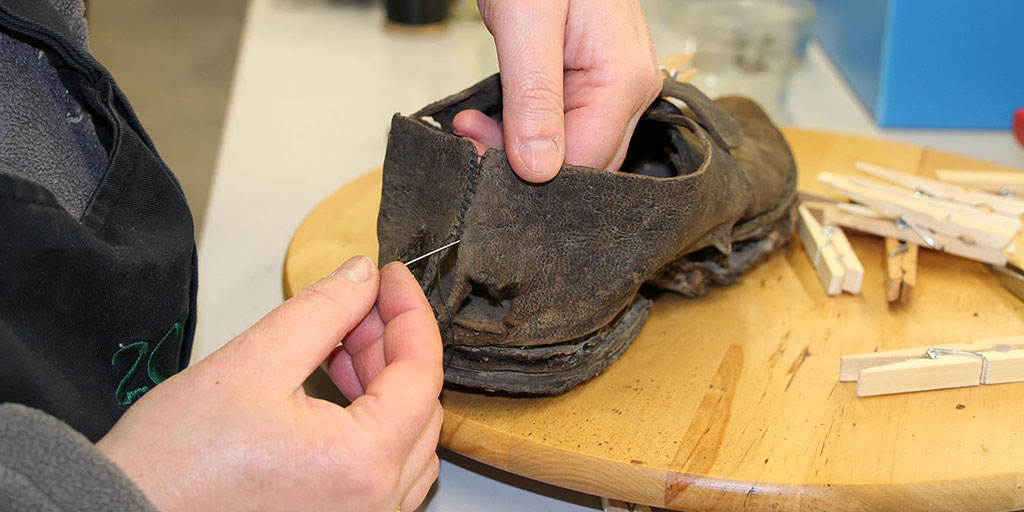
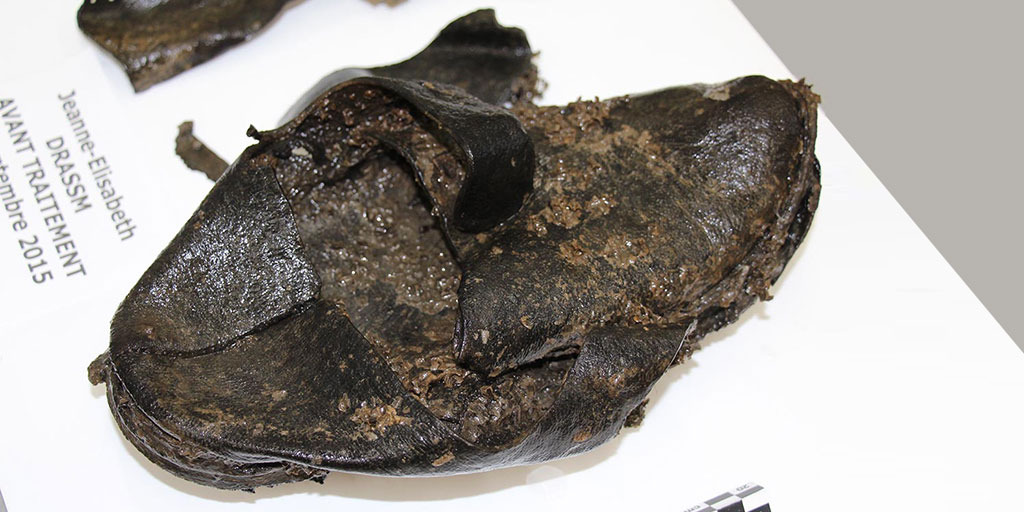
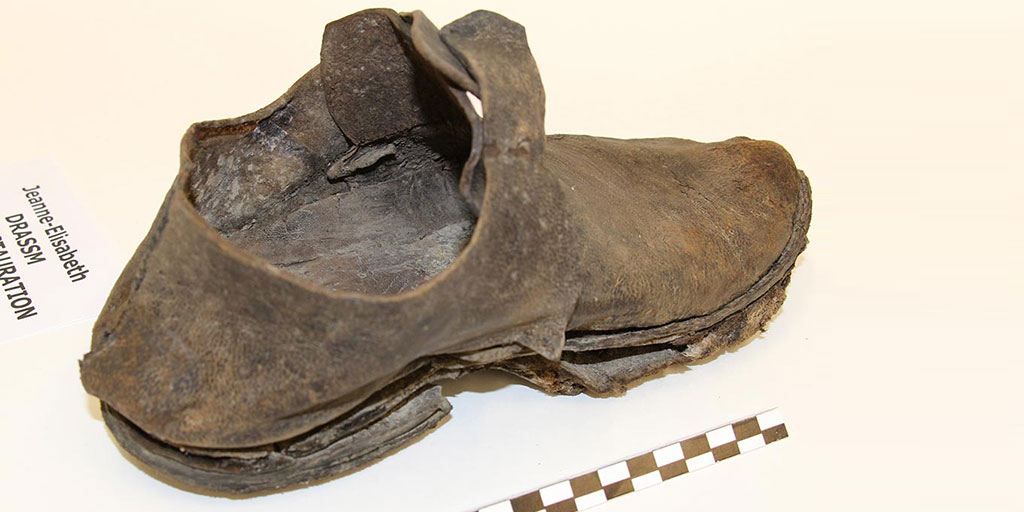
Conservation of a pair of coptic sandals kept by the Louvre museum in Paris
These leather sandals have been found in Antinoë (Egypt).
The leather is decorated with gold leaves and punches. The condition is poor. The shoes are flattened and the rests of the strips are not attached anymore to the soles. It is dirty.
Because we knew exactly the original shape of the lost strips, it was possible to make new ones with modern pieces of leather. These new parts have been reattached with very fine unwoven polyester backings. Reshaped, it has been retouched to match the aspect of the original leather.
Dating : Egypt, coptic period, after 130 AD.
